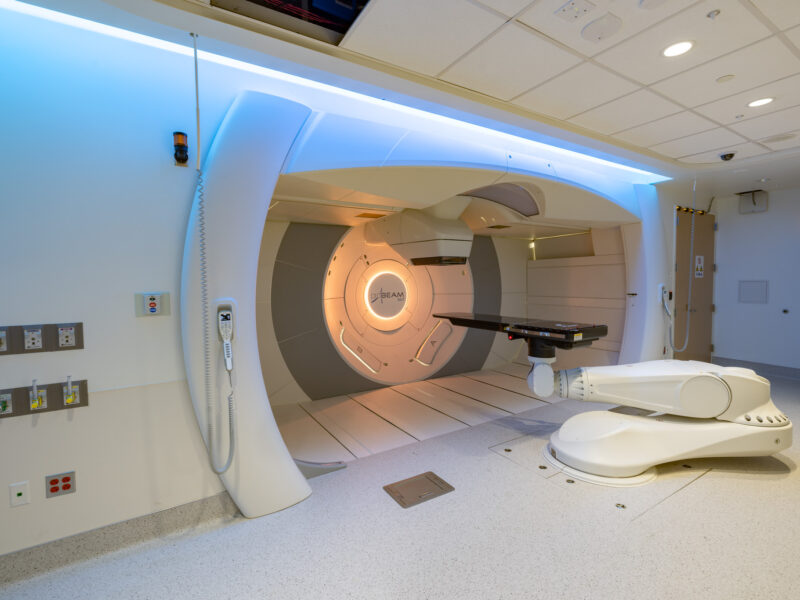Understanding the Role of LSD2 in the Molecular Genetics of Ewing Sarcoma
Understanding the Role of LSD2 in the Molecular Genetics of Ewing Sarcoma https://pediatricsnationwide.org/wp-content/themes/corpus/images/empty/thumbnail.jpg 150 150 Mary Bates, PhD Mary Bates, PhD https://secure.gravatar.com/avatar/c6233ca2b7754ab7c4c820e14eb518c8?s=96&d=mm&r=g- August 01, 2019
- Mary Bates, PhD
Study reveals novel potential drug target for Ewing sarcoma.
Ewing sarcoma is a bone-associated tumor of mostly children and young adults. Despite aggressive multi-modal treatment strategies, five-year survival remains at 75% for patients with localized disease and 20% for patients with metastases.
“Our laboratory is organized to try to understand how Ewing sarcoma develops at a molecular level,” says Stephen Lessnick, MD, PhD, director of the Center for Childhood Cancer & Blood Diseases in the Abigail Wexner Research Institute at Nationwide Children’s Hospital and co-author of a new study on Ewing sarcoma.
“The idea is that if we can understand that, we can help develop drugs that are more specific and less toxic,” he says.
A protein called lysine-specific demethylase 2, or LSD2, has been found to be overexpressed in many cancers. Previous research has shown that Ewing sarcoma cell lines are extremely susceptible to an experimental drug called SP-2509 that inhibits a closely related protein, LSD1.
The purpose of the study was to determine if LSD2 has a role in Ewing sarcoma, characterize the genes regulated by LSD2, and examine the impact of SP-2509 drug treatment on LSD2 gene regulation.
“Our paper clearly demonstrated that LSD2 is important for Ewing sarcoma development,” says Dr. Lessnick, who is also a professor of Pediatrics at The Ohio State University College of Medicine. “If we knockdown LSD2 using RNA interference, we lose the cancerous behavior of the cells. That means LSD2 is an important protein for Ewing sarcoma cells to become cancerous.”
In addition, Dr. Lessnick and his colleagues found that the drug SP-2509 does not seem to have a major effect on LSD2 in Ewing sarcoma cells. SP-2509 is likely to work primarily through inhibition of LSD1.
“This report identifies a new opportunity by demonstrating the critical role of LSD2 in oncogenic transformation,” says Priyal Patel, DO, a fellow in the Division of Hematology, Oncology, & Blood and Marrow Transplant at Nationwide Children’s and the study’s first author. “Although there are currently no small molecule agents that specifically inhibit LSD2, our results lay the foundation for further investigation into LSD2 as a target for the treatment of Ewing sarcoma.”
“LSD2 does not seem to be critically important for the function of the drug SP-2509,” says Dr. Lessnick. “However, LSD2 may be a new drug target that one could hope to develop inhibitors to. If you can develop an inhibitor to LSD2, we would predict that you would cause Ewing sarcoma cells to die.”
Dr. Patel agrees. “The takeaway message is that understanding the molecular genetics of Ewing sarcoma may prove crucial in the development of novel targeted drug treatments,” she says.
Citation:
Patel PO, Pishas KI, Taslim C, Selich-Anderson J, Theisen ER, Lessnick SL. Investigating the role of LSD2 as an epigenetic regulator in Ewing sarcoma. Oncotarget. 2019;10(39):3865-3878.
About the author
Mary a freelance science writer and blogger based in Boston. Her favorite topics include biology, psychology, neuroscience, ecology, and animal behavior. She has a BA in Biology-Psychology with a minor in English from Skidmore College in Saratoga Springs, NY, and a PhD from Brown University, where she researched bat echolocation and bullfrog chorusing.
-
Mary Bates, PhDhttps://pediatricsnationwide.org/author/mary-bates-phd/December 27, 2016
-
Mary Bates, PhDhttps://pediatricsnationwide.org/author/mary-bates-phd/
-
Mary Bates, PhDhttps://pediatricsnationwide.org/author/mary-bates-phd/
-
Mary Bates, PhDhttps://pediatricsnationwide.org/author/mary-bates-phd/
- Posted In:
- In Brief






